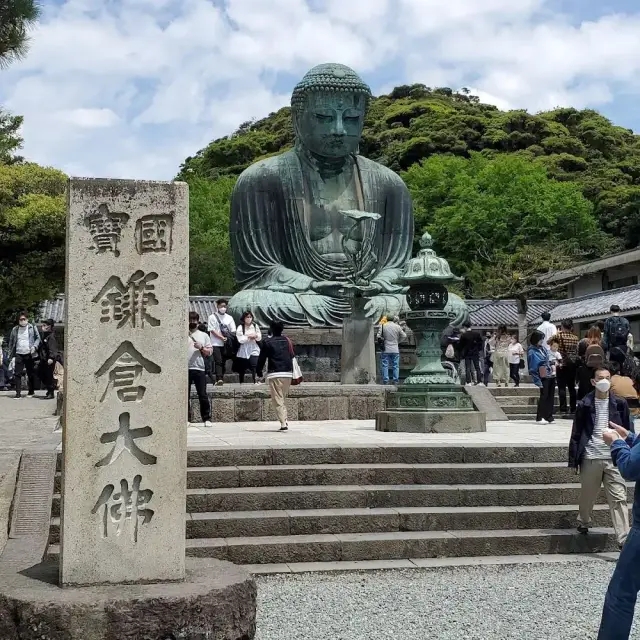https://www.dekitabi.com/itinerary/kamakura-essential-tour
Nestled just an hour south of Tokyo, Kamakura is a historical city brimming with cultural landmarks, serene temples, and vibrant streets. Known for its spiritual heritage and picturesque landscapes, Kamakura offers visitors an immersive experience into Japan’s past. This guide will take you through some of the most iconic sites in Kamakura, including Goryo Shrine, Hase-dera Temple, Kosokuji Temple, Kamakura Great Buddha Hall Kotokuin, Komachi Street, and Tsurugaoka Hachimangu Shrine.
Goryo Shrine: Tranquility and Tradition

https://www.dekitabi.com/attraction/goryo-shrine-kamakura
Goryo Shrine, situated in the heart of Kamakura, is an ancient Shinto shrine dedicated to the gods of protection and prosperity. Established in the 8th century, this shrine holds a deep spiritual significance and is renowned for its serene atmosphere. The shrine’s grounds are beautifully adorned with lush greenery, offering a peaceful retreat from the bustling city. Visitors can explore the traditional architecture, including the intricately designed torii gate and the historical main hall. The shrine is also known for its vibrant festivals, which provide a glimpse into local customs and traditions.
Hasedera Temple: A Sanctuary of Spiritual Reflection

https://www.dekitabi.com/attraction/kamakura-hasedera
A short stroll from the Kamakura train station brings you to Hase-dera Temple, a must-visit destination known for its impressive statues and scenic gardens. Established in 736 AD, Hase-dera is famous for its eleven-headed Kannon statue, which is believed to offer protection and healing. The temple’s lush gardens are meticulously maintained, creating a tranquil space for reflection and meditation. The panoramic views from the temple grounds offer a stunning perspective of Kamakura and the surrounding landscapes. Don’t miss the chance to explore the temple’s treasure house, which showcases various historical artifacts and religious relics.
Kosokuji Temple: Hidden Gem of Kamakura

https://www.dekitabi.com/attraction/kosoku-ji-temple
Kosokuji Temple, also known as Kosoku-ji, is a lesser-known gem that provides a more intimate temple experience. Founded in the late 13th century, this Zen Buddhist temple is renowned for its simplicity and elegance. The temple’s serene garden features a traditional Zen rock garden and a picturesque pond, creating a perfect setting for contemplation. Kosokuji’s main hall houses a revered statue of the Amida Buddha, attracting visitors seeking solace and spiritual insight. The temple’s quiet ambiance and historic charm make it a perfect spot for those looking to escape the more crowded tourist areas.
Kamakura Great Buddha Hall Kotokuin: An Iconic Landmark

https://www.dekitabi.com/attraction/kotokuin-temple
The Kamakura Great Buddha Hall Kotokuin, or Daibutsu, is one of Kamakura’s most iconic landmarks. This colossal bronze statue of Amida Buddha, standing at approximately 13.35 meters tall, is a testament to the city’s rich Buddhist heritage. Originally constructed in 1252, the Great Buddha has stood the test of time, despite enduring natural disasters over the centuries. Visitors can marvel at the intricate details of the statue and gain insight into its historical significance. The surrounding grounds provide ample space for reflection and appreciation of this monumental work of art.
Komachi Street: A Vibrant Shopping Experience

https://www.dekitabi.com/attraction/komachidori-street
No visit to Kamakura would be complete without exploring Komachi Street, a lively pedestrian thoroughfare brimming with local shops, eateries, and unique boutiques. This bustling street offers a delightful mix of traditional and modern Japanese culture. Visitors can sample a variety of local snacks, including freshly made senbei (rice crackers) and sweet treats like mochi and taiyaki. The street is also home to a range of artisanal shops selling handcrafted souvenirs, including pottery, textiles, and traditional Japanese crafts. Strolling down Komachi Street provides a perfect opportunity to soak in the local atmosphere and pick up memorable keepsakes.
Tsurugaoka Hachimangu Shrine: The Heart of Kamakura

https://www.dekitabi.com/attraction/tsurugaoka-hachimangu-kamakura
Tsurugaoka Hachimangu Shrine is the most important Shinto shrine in Kamakura, dedicated to Hachiman, the patron deity of samurai. Founded in 1063 by Minamoto no Yoriyoshi, the shrine is a focal point of Kamakura’s spiritual and cultural heritage. The grand entrance, with its impressive torii gate and long approach lined with cherry blossom trees, sets the tone for a visit steeped in tradition. The shrine’s main hall, or Honden, is a stunning example of traditional Japanese architecture and is surrounded by beautiful gardens and ponds. Visitors can also explore the nearby museum, which houses historical artifacts and offers insights into the shrine’s significance.
Conclusion
Kamakura’s rich tapestry of historical sites and vibrant streets offers a unique window into Japan’s cultural and spiritual heritage. From the serene Goryo Shrine and the majestic Kamakura Great Buddha Hall Kotokuin to the lively Komachi Street and the grand Tsurugaoka Hachimangu Shrine, each destination provides a distinct experience that highlights Kamakura’s historical depth and natural beauty. Whether you’re seeking spiritual reflection, cultural exploration, or simply a taste of local life, Kamakura promises a memorable journey through Japan’s storied past.


Leave a Reply